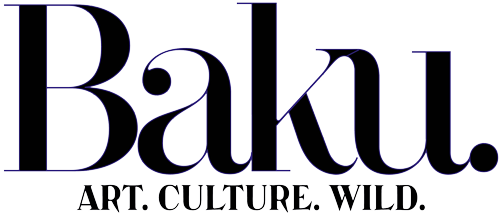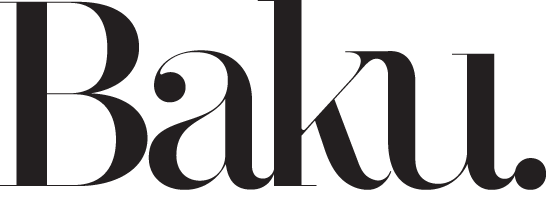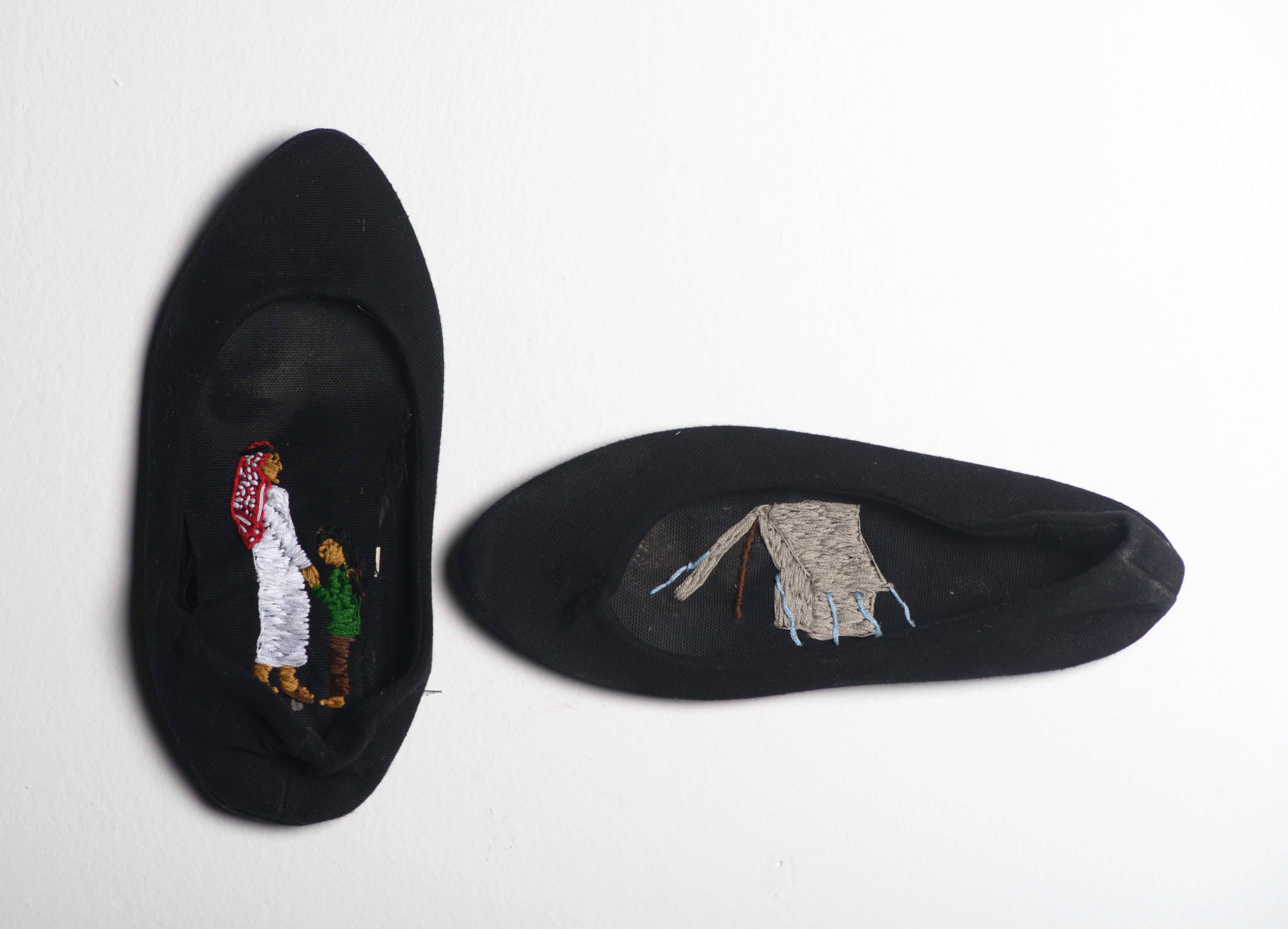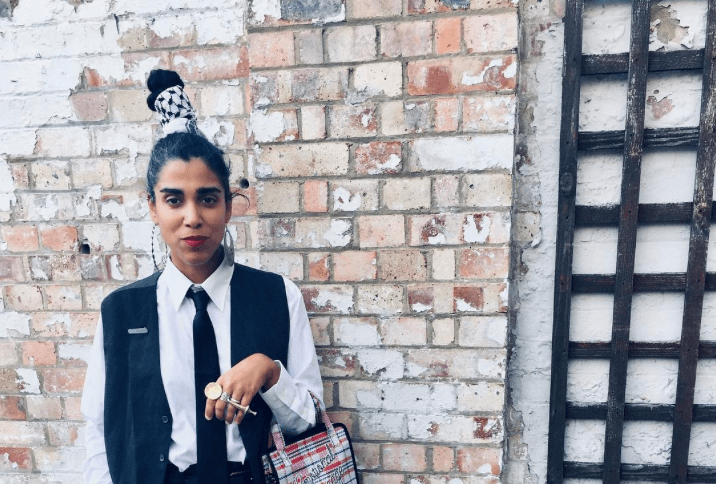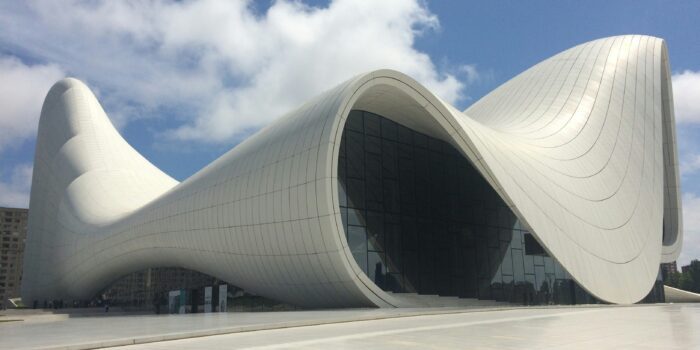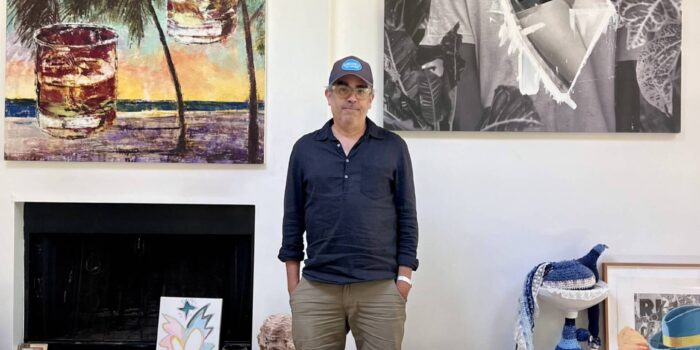For London-based Lebanese artist Aya Haidar, issues related to home and diaspora, memory and imagination are explored through multimedia works made from disposable or found objects – objects that contain their own histories and are then interwoven with new ones to create thought-provoking commentary on the situation of refugees today, amongst other things
“I am curious about the interpersonal revelations that surface through storytelling about a time that is gone but not forgotten,” says Lebanese artist Aya Haidar. “I am interested in a history of a region [the Middle East] that tells the modern day story of those who have survived and the impact of borders, migration, separation, loss, nostalgia of a time and place, against a contemporary backdrop of current geopolitics. These personal accounts allow us an inlet to humanize a people and understand the multi layers that lay beneath modern day issues.”
With an MSc in NGOs and Development from the London School of Economics, Haidar has long been interested in issues of identity and politics, what she refers to as the “recycling of found and disposable objects making poetic works that explore loss, migration and memory, with a particular focus on the Middle East through the histories contained within aged, and culturally specific objects.” Her studies enhanced an ongoing interest in global socio-political issues, their theories and their narratives. “All my work around borders, migration and humanitarian issues had been solely based on empirical information, from personal experience, storytelling and memory,” she says. “Studying the subject was a chance to deepen my understanding on the theory and exchange thoughts and ideas through debate and discussion, research and writing.”
As such, her newest work includes a residential collaboration with Deveron Projects in Scotland. The result? A café (called ‘No.11 Gordon Street’), that worked to bring the Scottish and Syrian refugee communities together through the mutual and universal language of food. The plight of refugees has long been one of the focuses of her work, as evidenced by the recent series ‘Kiass’ (2018), in which Haidar embroidered various everyday objects, from lighters to period pads and pistachios, onto plastic bags, and her evocative ‘Soleless’ (2012-), onto which she sewed images of the harsh realities encountered by refugees onto the soles of shoes.
“For me, conceptual art is what speaks loudest,” she says. “That is, art with a certain level of engagement (be it political or social) that allows for the audience to have a personal experience with what is being presented to them is incredibly powerful. Art that instigates a thought, introduces a new idea or issue, that rocks the boat and creates debate and discussion is always going to fulfill its purpose as a successful piece of work.”
Your No.11 café project has been getting some attention – were there any challenges to overcome?
While Aberdeenshire Council had done a great job in ensuring all the refugees’ basic needs were met, (food, shelter, education, benefits, and so on), due to the language gap, there was a real failure in considering their full integration. There was only one official Arabic translator to help with over 120 refugees and none of them spoke English. As a fluent Arabic speaker myself, it was such an interesting experience talking to this group of people who have experienced some of the most harrowing ordeals, seen and felt things nobody would care to remember and yet, after all this, have no outlet to share it because of this language barrier. A highlight for me and them was to be able to share an incredibly personal and honest exchange, a sincere one, a relationship based on trust and respect in which they saw me as an outlet. I guess I was able to be a sort of voice that could translate and share all the stories they had carried with them. While this came with a lot of emotional challenges, it was also an amazingly cathartic highlight.
Your recent ‘Kiass’ series, in which you embroidered various everyday objects onto plastic bags, explores the difficult choices Syrian refugees make upon being forced to leave their homes. What are some standout stories behind the work?
Despite its starting point originating with the simple yet weighty question,‘What essentials did you take with you?’ the resulting work is actually quite a humorous, personal and relatable outcome. It sought to break down a cultural barrier and certainly some preconceptions about an otherwise conservative and misunderstood community.
One of the stories that stood out to me was by this young girl, who told me one of the things she took was a tray of warak enab (delicious wrapped vine leaves) which she had been wrapping for hours, until the Syrian army suddenly broke in and raided their house. She could only think to take the tray with her, before anything else, because she had worked so hard on them and didn’t want them to reap the fruits of her labour!
Another great story came from an older lady, very conservative, veiled from head to toe. She chose to take a pair of knickers, tweezers and a shaver with her because, despite being on the run, and not knowing where they might end up, she had to make sure she looked good for the husband!
These stories made me smile because despite the bloodshed and loss, these people have preserved their humour and their humanity. As we exchanged stories, some women spoke above others and laughed and joked and it reasserted to me that their spirit is still firmly intact.
Why do you think this particular project worked so well in establishing integration between the Syrian and Scottish communities?
The work we did at Deveron Projects created a platform for the Scottish community to put a face to the name of an otherwise misunderstood community. The Scots and Syrians are so different in so many aspects, from ethnicity and religion to customs, language, etc, and so it was a challenge to develop an integration project that brought all of these issues and people to the table. So how did we do it? By literally bringing them to the table! The politics and identity of food is so loaded that is transcends language and difference. By opening up N11, a cafe run on donation only, where all the food was cooked by local Syrian refugee women, we were able to introduce local Scots to a totally foreign culture without having to explain anything. The warmth of their welcome, hospitality of their nature, generosity of their portions and the taste of the little bits of zaatar smuggled from Aleppo that they shared said more about the Syrian people than any document or policy ever could.
Open spaces that bring communities and cultures around the table with food is a great place to start because their exchange begins with having to share something.
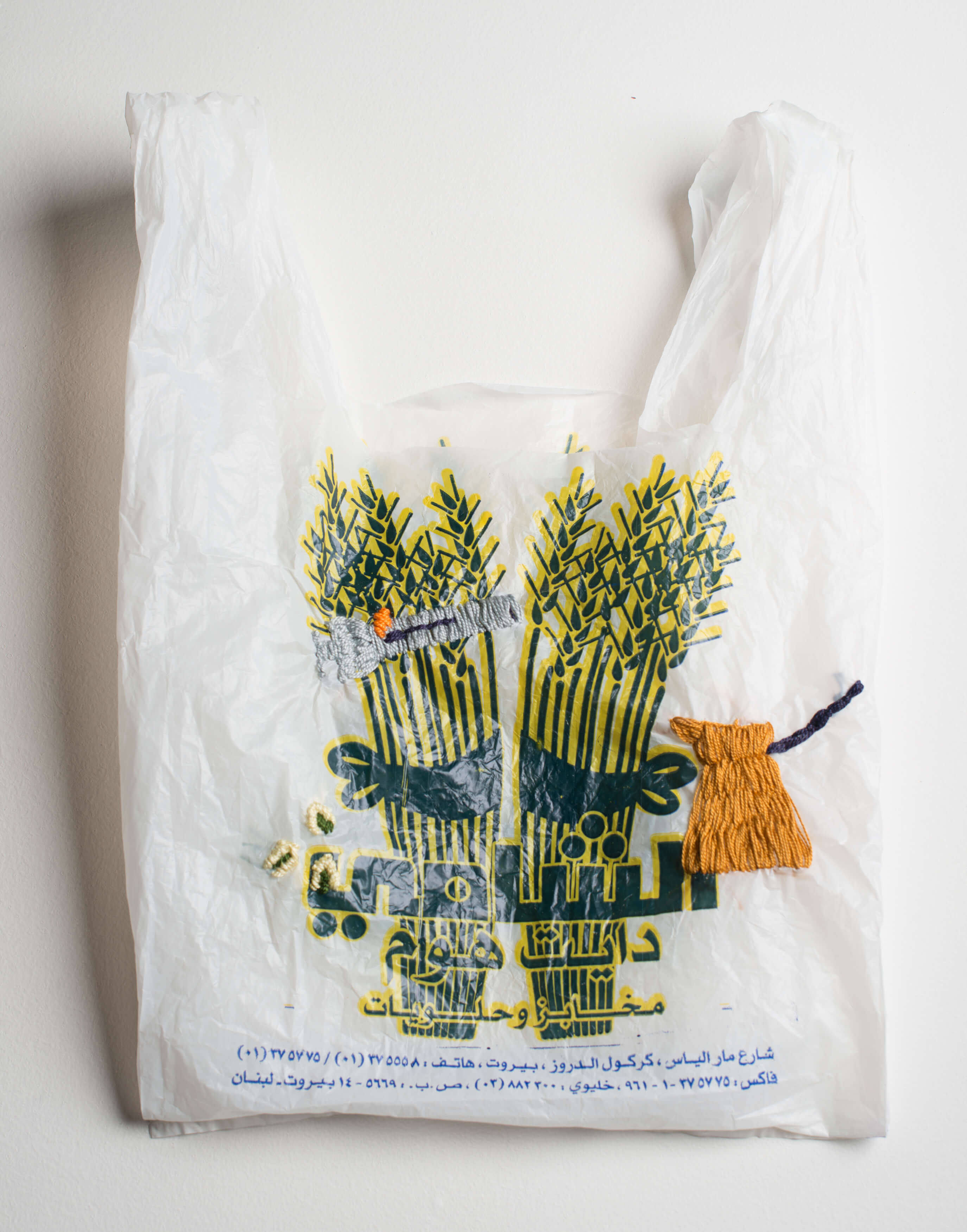
This is the bag that Hayat took with her, containing her falafel maker, a rakweh (Arabic coffee pot) and a handful of pistachios
Zaatar! What else had the refugees brought with them?
The whole series actually began when my dear friend Hayat invited me to her house to make falafel and she pulled out this bashed up and rusty falafel maker, which she had brought over from her home in Aleppo. She said that as she was fleeing, she made sure it went into her handbag because she had to make sure she could keep cooking while on the run. It was so humble and honest. It came from such a genuine and practical place of a mother thinking of feeding her family and arming herself with the utensil to do that.
What is your favourite medium to work in? Most recently, you have used multimedia, particularly disposable objects, for your art. How did this process begin, and why have you chosen embroidery as your main medium, particularly for your ‘Kiass’ and ‘Soleless’ series?
On a personal level, I have a strong affinity to craft, from sewing to knitting and weaving. I grew up with the latter two, thanks to my grandmother, who used to knit and weave as she recounted stories of Lebanon to me. As such, for me, there is an immense tug towards this medium. Historically, women would sew collectively and keep their heritage alive by exchanging stories with each other and passing them down from generation to generation, which is such an important element when you think of ways to keep lineage alive. Furthermore, it is steeped in feminist history as it was the medium that projected women onto the expressive stage well before they ever had a voice within the public realm.
I use disposable and recycled objects because of the stories contained within the objects themselves. Well before I intervene with them, these stories are present, but also because I admire the resourcefulness of diasporic communities who use and reuse materials to fulfil the purpose they need. In the face of the disposable societies we have grown to develop, these are attributes that i firmly respect and admire and think we should go back to.
How important is it to you that your art is accessible; how will you encourage others to participate?
In my opinion I think all art should engage its audience – whether on a physical level or an emotional one. That’s not to say that I think everyone should agree with my work, but if I can create a space in which discussion can be encouraged and nurtured, then I believe that I have instigated something positive to ripple onwards.
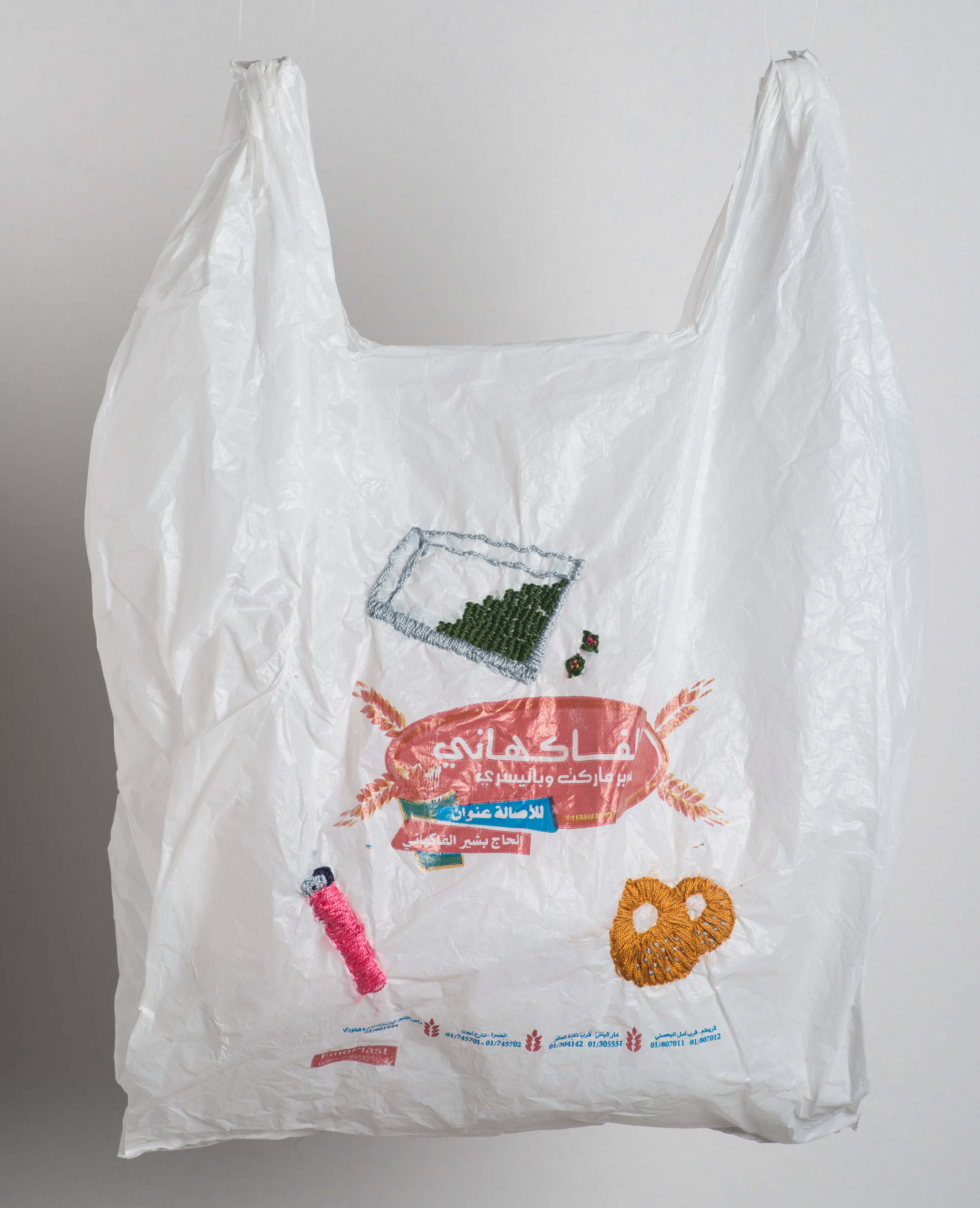
Here are depicted the warak enab that Abeer salvaged when fleeing. Alongside the tray of warak enab was a lighter and some kaak (bread)!
Do you think it’s best to look back on history or forward to the future when producing your art? Why?
I believe the two are interconnected. So much of where I am at now – or where I am going – is due to the experiences that have happened in the past. My family fled Lebanon in 1982 during the Israeli invasion, at the height of its 15 year civil war. Retracing my family’s journeys, the homes and items left behind, and the encounters and relationships they experienced with people and places have all informed my current journey, from how I ended up in the UK to how I explore current reflections on diaspora, forced migration, loss and memory.
What are you working on next?
At the moment I have a few socially engaged projects in the pipeline. I am collaborating with Riannon White, who runs Common Wealth Theatre company, on a commission for the Labour party looking at class and gender. We will be working with victims of domestic violence, documenting their experiences and working on taking back ownership of the rhetoric used to refer to these women.
Additionally, I am participating in Common Wealth’s latest production, which is called I Have Met the Enemy and the Enemy is Me, a series of performances looking at the UK’s complicity in wars around the world.
Furthermore, I have recently been asked to contribute as a socially engaged practitioner with Cubitt Gallery, as well as develop a whole new body of work around Arab identity and sexuality for my upcoming solo show with b. dewitt gallery in London in early 2019. Watch this space…
Images courtesy of the artist
Like this? Then you’ll love: Basir Mahmood on dividing things equally | On the road from Baku far into the wilderness
